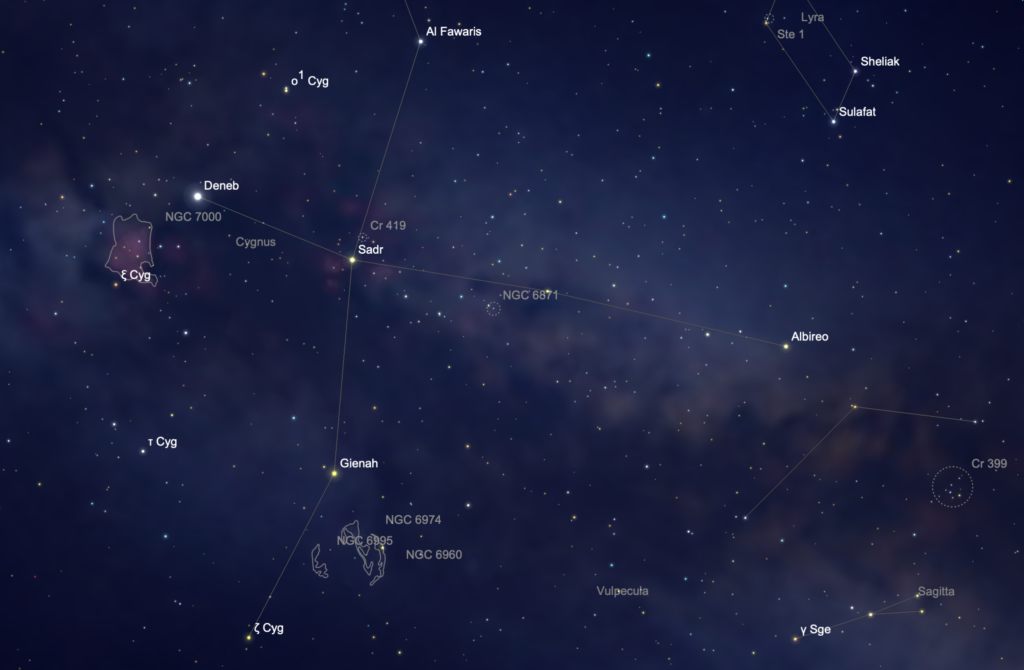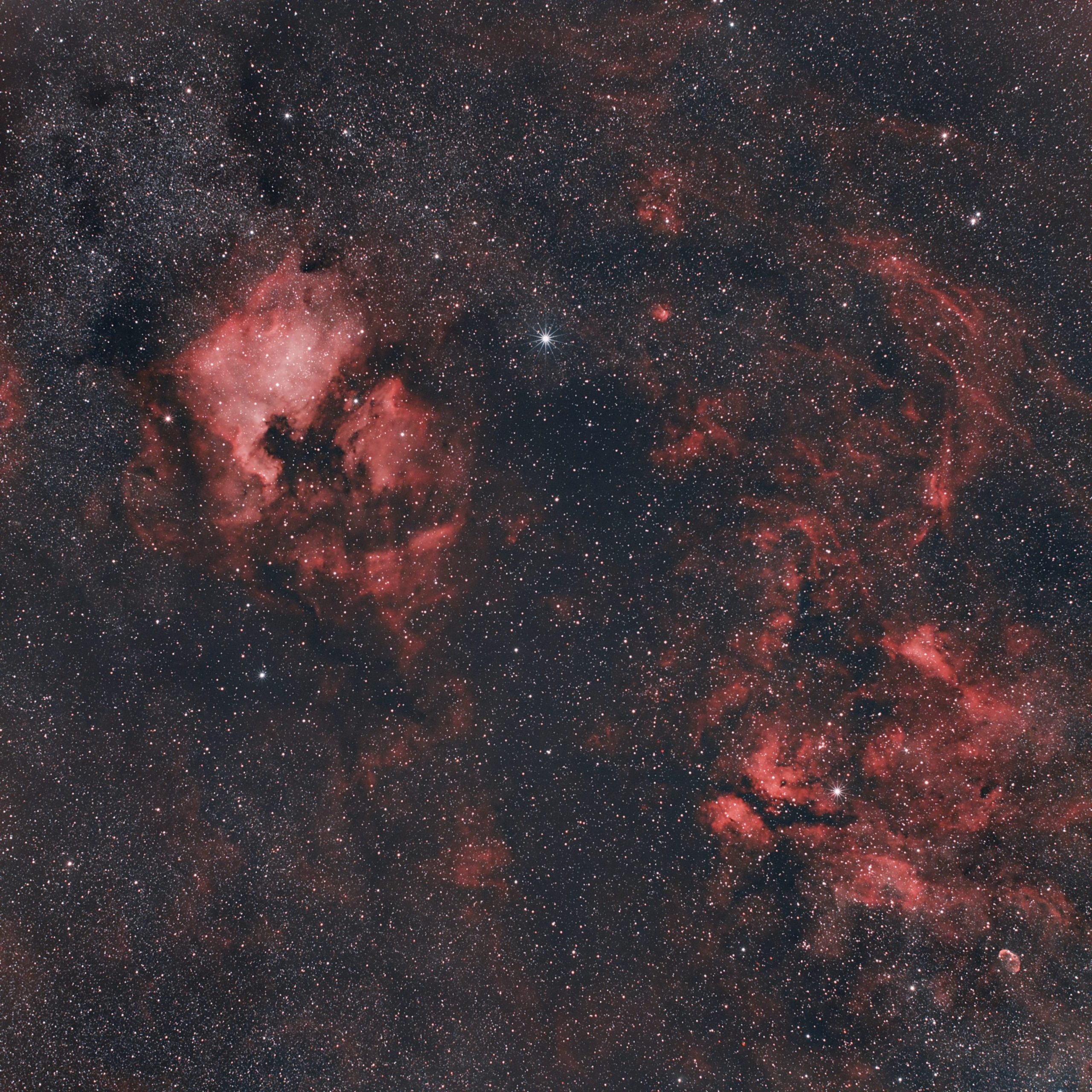
Just off the tip of the Northern Cross (or the tail of Cygnus, the Swan) lies the photogenic NGC 7000, an immense star-forming complex embedded in rarefied hydrogen gas set aglow by massive blue-white stars. This emission nebula has an evocative shape that resembles the continent of North America which lends its informal name. Unlike more compact and concentrated nebula like the Swan or Orion Nebulae, the North America Nebula is a challenging object to spot visually. But it’s always a treat to see its faint ethereal glow emerging from the starry background of the northern Milky Way.As with most star-forming regions, there’s a lot going on in this little patch of sky. The prettiest part of the nebula, the faint pink and magenta glow, is in a sense the least interesting. It’s simply cold hydrogen gas excited by ultraviolet light from newly formed stars embedded within and adjacent to the nebula. The UV light from the hot stars knocks off a single electron from a hydrogen atom leaving a lone proton behind. In time, the electron finds its way back to a proton and cascades to a lower state of energy, emitting light at discrete colors along the way. With our eyes (and cameras) we perceive mostly two colors: blue-green at 486nm (the ‘hydrogen beta’ wavelength) and deep-red at 656nm (the ‘hydrogen alpha’ wavelength).
But the real action in this nebula is hidden from view. Deep within the clouds of dust and hydrogen and helium gas lie much more compact and dense regions that are compressed by gravity until clusters of new stars ignite. The most active star generation lies inside the ‘Cygnus Wall’, the bright part of the nebula that resembles ‘Mexico’. This is one of hundreds of similar regions where the galaxy does its business generating new stars from the stuff of old stars and heaps of primordial gas left over from the formation of the universe.
The shape of NGC 7000 (as we see it) is further influenced by copious amounts of dark dust lanes that lie in front of the nebula. The ‘Gulf of Mexico’ region of the nebula is caused by a particularly dense cloud of cold interstellar dust. Behind this dust is more bright nebulosity which is blocked from our line of sight. Above and to the left of the nebula (as seen in the image above) lies relatively little dust which gives us a view deeper into the dense star clouds of the Milky Way. The distance to the nebula is uncertain; it may lie about 1,800 light years away which makes its true size about 100 light years across.

To see the North America Nebula, you must have very dark sky. It’s not an object for urban observers. It lies about three degrees northeast of the bright star Deneb. In ideal conditions, the nebula is just visible to the unaided eye as a bright patch along the Milky Way. It’s a perfect object for binoculars. Most telescopes offer too narrow a field of view for this object: you need a scope that can take in at least four degrees to frame the object in its entirety.
NGC 7000 is a far more popular target for astrophotographers than visual observers. The integrated brightness of the complex puts the nebula at a bright magnitude +4.0, but this light is spread over an area about four times larger than the full Moon. Digital cameras are sensitive beasts, however, and they can easily capture the outlines of the nebula with little effort, even in light-polluted sky. The image of the nebula at top and below were captured from relatively bright light-polluted suburban sky where the nebula was entirely invisible to the eye. I used a Nikon Z6 camera and a 35-year-old Nikkor 180mm f/2.8 ED Ai-S lens (a really superb manual-focus lens for Earth and sky). Each image was a stack of tracked 10 x 15s exposures at f/2.8 and ISO1600. Processed in Lightroom and Photoshop and gently optimized with Topaz Labs DeNoise AI.
